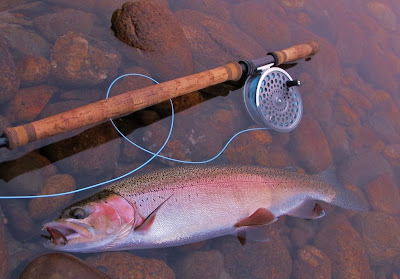I’ve been a reader for most
of my life. I was fortunate to have a loving Scottish grandmother with the patience to
teach me to read before the age of five. Needless to say this gave me a vast
head start on kindergarten. By first grade, when most of the kids were struggling through the Dick and Jane books used to teach kids to read in those
days, I’d already read Lewis Carroll’s Through
the Looking Glass, which my grandmother had chosen as a primer.
My grandmother taught me to
read & my grandfather taught me to angle. A love of angling literature soon
followed. By the age of eight I was devouring the great Frank Woolner’s weekly
outdoor column in the Worcester Telegram
Gazette, as well as gaining a reputation at the local pond. I learned a lot
from reading Frank Woolner. (Frank Woolner: 1916-1994; famed WWII battlefield
journalist & tank commander; author of Spearhead,
a classic text for WWII historians; Cape Cod surf striper & beach buggy
fishing pioneer; outdoor writer & the author of many books on environmental,
angling & hunting subjects; IGFA Sportfishing Hall of Fame inductee).
Frank Woolner was not only a
great angler & article writer, but also a creative writer of prose laced
with wry Yankee humor, his writing often verging on poetry; his work embodying
the finest literary tradition of our game. Woolner could tell a story, & it was through him that I was
introduced to the angling story.
I can’t think of any other
sport outside of angling in which the written article assumes such importance.
Much of what we learn about flyfishing comes through reading articles, &
how-to articles are the main course of angling publications, with few
exceptions. Though most angling magazines are stuffed with articles, which I
enjoy immensely, there is always at least one story, often tagged to the back
page as a tailout feature. And much as I love the articles, upon receiving a magazine
I always go straight to the story before reading the how-to stuff – & I
know others who do the same.
So, I’ve wondered: If story
is such a strong draw for many of us, why not an angling periodical totally
devoted to story? I can think of a couple published in the U.S. Though
hunting shares equal billing, Gray’s
Sporting Journal is all story, & with a very high literary standard.
Also The Drake, which is all story,
though much of it devoted to destination pieces that are couched as creative
memoir -- a form my writer friends have forbidden me to practice. There is a singular style and overall vibe to The Drake that I've heard described as “Gen X Onanistic”
though, to be fair, much of that vibe is created by advertising aimed at Gen X
readers, the writing is generally good, & there’s no denying the success of
The Drake during an age when print
magazines are folding at an alarming rate, which says something about the power
of ‘story’.
I am fortunate in my position
as contributing editor for Swing The Fly magazine,
as Zack Williams, the founding editor, encourages the staff writers to write
what they please, so there’s a good balance of both articles & stories in
the magazine. A story I’d written for Swing
The Fly happened to catch the attention of Pete Tyjas, editor-in-chief of Fly Culture magazine, a print quarterly
out of the U.K.
totally devoted to story. Pete, a pleasant, as well as wide-ranging chap, contacted
me wanting to know if I would submit a story to Fly Culture.
That request from a British
magazine gave me some trepidation, considering Britain,
the land of Shakespeare,
Byron, Austin,
Dickens &, indeed, Bernars & Walton, the mother & father of
fish-writing, is the very homeland of English literature. Surely the editor had studied at Eaton or Cambridge & was
holding a high bar – a standard this Mongrel-American descendant of Cotton
Mather’s witch-hanging zealots & wayward son of rebellious New England could not dare to aspire to.
Nevertheless I sent a story.
And it was accepted.
Pete sent me a copy of Fly Culture containing my article.
Flipping through it I was immediately impressed that there are no
advertisements. None. Considering how magazines depend on ads to stay afloat, I
honestly don’t know how they pull that off. The price is comparable to the
better magazines. Put together with thick, quality paper, Fly Culture looks good enough to be a coffee table book.
The issue Pete sent me
contains thirteen stories – all of them well written (& also tactfully edited,
without a single typo). Good writing is never boring; I slipped through the Fly Culture stories like water through a
net. There is reading here to last awhile but I couldn’t put it down. And the
images accompanying the stories, art & photos, are excellent. The stories
encompass the U.K., Europe, the
U.S.
& beyond. I didn’t know about the good trout fishing to be had in the
mountains of Italy,
so one more trip for the bucket list. One more dream.
I asked Pete Tygas his
mission statement for Fly Culture, &
he put it thus:
“To bring you a fly fishing
magazine with great writing and photography that you’ll enjoy reading. To
concentrate on quality be it in the content you’ll read or the way the magazine
is presented and never to cut corners on this quest. To remain proudly independent.
To offer you a true and contemporary look at the culture of fly fishing.”
If you enjoy stories &
would like to meet some fresh voices in angling literature, writing from
interesting places, I think you’d like Fly Culture. As the name indicates, there’s a lot more to
flyfishing than just fishing. And a subscription supports the emerging voices
of the ongoing literary tradition of our game. https://flyculturemag.com/















































